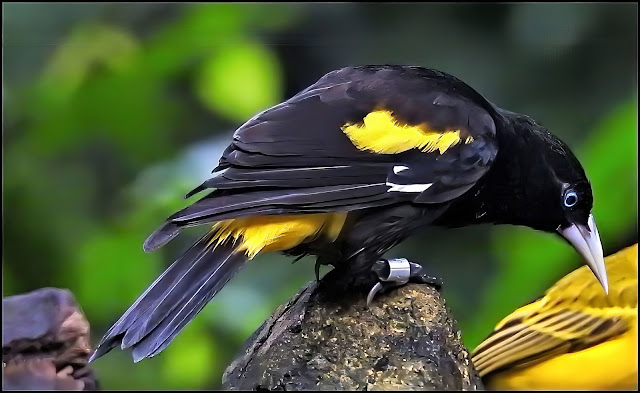The southern cassowary (Casuarius casuarius), also known as double-wattled cassowary, Australian cassowary, or two-wattled cassowary, is a large flightless black bird, found in Indonesia, Papua New Guinea, and northeastern Australia. It is one of the three living species of cassowary, alongside the dwarf cassowary and the northern cassowary. It is a ratite and therefore related to the emu, ostriches, rheas and kiwi.
The southern cassowary is distributed in Indonesia, Papua New Guinea, and northeastern Australia. It mainly inhabits tropical rainforests but may make use of nearby savannah forests or mangroves stands. The species prefers elevations below 1,100 m (3,600 ft) in Australia, and 500 m (1,600 ft) on New Guinea.
The Australian population is listed as Endangered under federal and Queensland state legislation.
Presently, most authorities consider the southern cassowary monotypic, but several subspecies have been described. It has proven very difficult to confirm the validity of these due to individual variations, age-related variations, the relatively few available specimens (and the bright skin of the head and neck – the basis upon which several subspecies have been described – fades in specimens), and that locals are known to have traded live cassowaries for hundreds, if not thousands of years, some of which are likely to have escaped/been deliberately introduced to regions away from their origin.
Cassowaries are most closely related to the kiwis, both families diverging from a common ancestor approximately 40 million years ago.
The southern cassowary has stiff, bristly black plumage, a blue face and a long neck, red on the cape and two red wattles measuring around 17.8 cm (7.0 in) in length hanging down around its throat. A horn-like brown casque, measuring 13 to 16.9 cm (5.1 to 6.7 in) high, sits atop the head. The bill can range from 9.8 to 19 cm (3.9 to 7.5 in). The plumage is sexually monomorphic, but the female is dominant and larger with a longer casque, larger bill and brighter-coloured bare parts. The juveniles have brown longitudinal striped plumage.
The three-toed feet are thick and powerful, equipped with a lethal dagger-like claw up to 12 cm (4.7 in) on the inner toe. It is perhaps the largest member of the cassowary family and is tied as the third heaviest bird on earth (after the Somali ostrich and the common ostrich), at a maximum size estimated at 85 kg (187 lb) and 190 cm (6 ft 3 in) tall. Normally, this species ranges from 127 to 170 cm (4 ft 2 in to 5 ft 7 in) in length. The height is normally 150 to 180 cm (4 ft 11 in to 5 ft 11 in) ; females average 58.5 kg (129 lb), while males average 29 to 34 kg (64–75 lb). The northern cassowary is about the same size on average and is perhaps very mildly less sexually dimorphic than the southern. Most adult birds will weigh between 17 and 70 kg (37 and 154 lb). It is technically the largest Asian bird (since the extinction of the Arabian ostrich) and the largest Australian bird (though the emu may be slightly taller).
%2010.jpg)





%2030.jpg)






%2010.jpg)
%2012.jpg)
%2011.jpg)
%2010.jpg)




%2010.jpg)





%2010.jpg)
%2011.jpg)
%2012.jpg)




%2020.jpg)
%2021.jpg)
%2022.jpg)

%2020.jpg)
%2022.jpg)
%2010.jpg)



%2010.jpg)
%2010.jpg)

